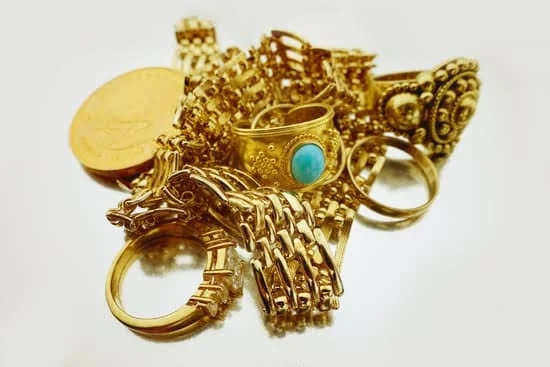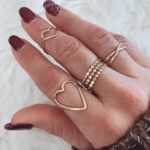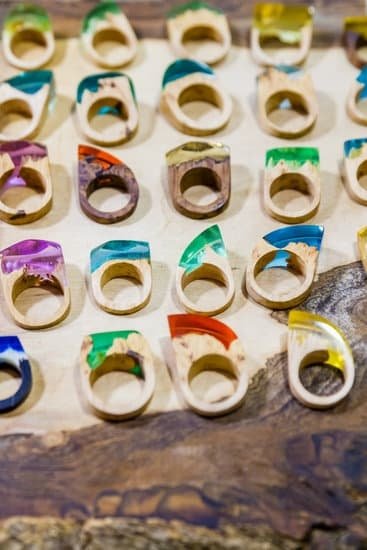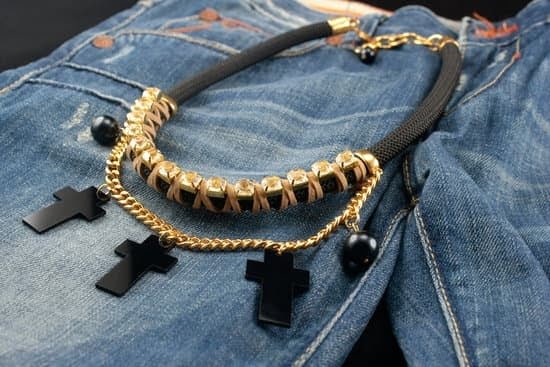Fine jewelry has always held a special allure for those who appreciate exquisite craftsmanship and timeless beauty. But who buys fine jewelry, and what motivates their purchase? The answer to this question is complex and multifaceted, as there are various reasons why people are drawn to fine jewelry and the emotional significance it holds.
Luxury buyers are a prominent demographic who invest in high-end luxury items, including fine jewelry, for reasons such as status and investment. They view these pieces not only as beautiful adornments but also as tangible assets that hold and even appreciate in value over time. Another significant market for fine jewelry is the wedding industry, with couples and families investing in engagement rings, wedding bands, and anniversary gifts to symbolize love, commitment, and milestone celebrations.
Furthermore, generational differences play a role in the purchasing habits of fine jewelry. Baby Boomers may seek classic designs with sentimental value, while Millennials and Gen Z consumers may be more interested in personalization and ethical sourcing. Celebrities, fashion icons, and influencers also have a notable impact on the purchase of fine jewelry, influencing trends and shaping consumer preferences. These factors collectively contribute to the diverse landscape of individuals who purchase fine jewelry for various reasons.
Luxury Buyers
When it comes to luxury buyers, there is a particular demographic that is drawn to fine jewelry for reasons beyond just aesthetic appeal. These consumers are often seeking status and prestige, with the purchase of high-end fine jewelry serving as a symbol of wealth and success. For these individuals, owning valuable pieces from renowned jewelers represents a certain level of accomplishment and recognition within their social circles.
Furthermore, many luxury buyers view fine jewelry as an investment rather than just an accessory. The rarity and quality of materials used in creating these pieces make them highly sought-after items in the world of high-end fashion. As such, these consumers see their purchases as assets that can appreciate over time, much like investing in art or real estate.
According to recent market research, luxury buyers who purchase fine jewelry for status and investment purposes tend to belong to the upper echelons of society. They are typically high-income individuals who have a penchant for exclusivity and opulence. These discerning buyers seek out unique and limited-edition pieces from prestigious brands and renowned jewelers, often attending private sales events or exclusive showcases to acquire the most coveted items in the market.
| Luxury Buyer Profile | Key Characteristics |
|---|---|
| High-Income Individuals | Pursuit of exclusivity and opulence |
| Social Status Seekers | View fine jewelry as symbol of wealth and prestige |
| Investment Mindset | Perceive fine jewelry as valuable assets with potential appreciation over time |
Wedding Market
The “Who Buys Fine Jewelry” demographic expands broadly to include a wide range of individuals who are seeking something meaningful and valuable. When it comes to the wedding market, there is a specific demographic that invests in fine jewelry for engagement rings, wedding bands, and anniversary gifts. This demographic typically consists of couples and families who are celebrating milestone events and looking to commemorate them with a lasting symbol of love and commitment.
According to recent studies, the age group that is most likely to be purchasing fine jewelry for wedding-related purposes falls within the 25-34 age bracket. These individuals are often in their prime years for getting married or celebrate significant anniversaries. Additionally, there has been a notable increase in same-sex couples purchasing fine jewelry for their engagements and weddings, reflecting the growing diversity within the wedding market.
It’s important to note that this demographic varies greatly in terms of income level, with some couples opting for more budget-friendly options while others are willing to make a substantial investment in high-quality pieces. The key motivating factor here is often the desire to find timeless pieces that will serve as a lasting reminder of their love and commitment.
| Demographic | Age Group | Key Motivating Factor |
|---|---|---|
| Couples & Families | 25-34 | Desire for timeless pieces |
| Same-sex Couples | Varies | Celebrating diversity & love |
Generational Buyers
When it comes to the purchase of fine jewelry, different generations have varying purchasing habits and preferences. Understanding these differences can provide valuable insight for jewelers and retailers looking to target specific demographics. From Baby Boomers to Gen Z, each generation has its own unique relationship with fine jewelry.
Baby Boomers
Baby Boomers, typically born between 1946 and 1964, are characterized by their traditional values and appreciation for classic, timeless pieces. They often view fine jewelry as a symbol of achievement and success, making them more likely to invest in high-quality gems and precious metals. Baby Boomers also value personalized service and are more likely to buy from established brick-and-mortar stores with a strong reputation.
Gen X
Generation X, born between 1965 and 1980, tends to be more individualistic and pragmatic in their approach to fine jewelry. They appreciate timeless designs but are also drawn to modern styles that reflect their personal taste. Gen X buyers are generally seeking value for their money and are more likely to research online before making a purchase. They are open to both traditional retail stores and online platforms, as long as they can find reputable sellers.
Millennials and Gen Z
Millennials (born between 1981-1996) and Gen Z (born after 1997) have been influenced by technology, social media, and sustainability. As a result, they seek out unique designs, ethical sourcing practices, and brands that align with their values. Both generations prioritize experiences over material possessions but still appreciate fine jewelry as a form of self-expression. Millennials are more likely to engage in online purchases while Gen Z prefers a seamless shopping experience through various digital channels.
Understanding the distinct preferences of each generation will allow retailers and jewelers to tailor their marketing strategies in order to appeal to who buys fine jewelry. By effectively targeting these demographics based on their purchasing behavior and values, businesses can foster meaningful connections with customers across different age groups.
Fashion and Style Influencers
Celebrities Setting Trends
Celebrities have a significant impact on the purchase of fine jewelry. When A-listers are seen wearing stunning diamond necklaces, dazzling chandelier earrings, or exquisite cocktail rings on the red carpet or in their everyday lives, it often leads to a surge in demand for similar pieces among their fan base. The desirability of owning jewelry that mirrors that of an admired celebrity fuels the market for luxurious and high-end accessories.
Fashion Icons as Trendsetters
Furthermore, fashion icons such as designers, models, and stylists play a crucial role in shaping trends within the fine jewelry industry. Their ability to curate unique looks and set new standards for elegance and glamour influences not only the purchases made by high-profile individuals but also trickles down to everyday consumers seeking to emulate their style.
The Rise of Social Media Influencers
In recent years, social media influencers have emerged as powerful drivers of consumer behavior. With large followings on platforms like Instagram, YouTube, and TikTok, these individuals have become authority figures in fashion and lifestyle choices.
Whether through sponsored content or organic posts showcasing fine jewelry brands, influencers can significantly impact who buys fine jewelry by introducing new products to their audience or reimagining existing pieces in fresh and exciting ways. As a result, their endorsements hold substantial sway over consumer preferences and purchasing decisions.
Special Occasions
There are various special occasions where the purchase of fine jewelry plays a significant role in celebrating and honoring the event. Below are some examples:
- Birthdays: Many people choose to mark their birthdays with the gift of fine jewelry, such as birthstone necklaces, bracelets, or rings that hold personal significance.
- Graduations: Graduation from high school or college is a major milestone in life, and it is often commemorated with the gift of fine jewelry to symbolize achievement and success.
- Milestone Anniversaries: Couples celebrate years of love and commitment by exchanging fine jewelry such as diamond anniversary bands or other precious gemstones to mark significant anniversaries like the 10th, 25th, or 50th.
These special occasions serve as opportunities for individuals to express love, appreciation, and admiration for those closest to them through the gift of fine jewelry. Whether it’s a gift from a loved one or a self-purchase to commemorate personal achievements, the emotional significance attached to these pieces makes them cherished keepsakes for years to come.
Self-Buyers
When it comes to the world of fine jewelry, there has been a noticeable shift in recent years. More and more individuals are purchasing fine jewelry for themselves as a means of self-expression and empowerment. This growing trend reflects a desire for individuals to celebrate their personal achievements and milestones with meaningful pieces that hold emotional significance.
For those who buy fine jewelry for themselves, the reasons behind their purchases can be wide-ranging. Some individuals view self-purchasing as an act of self-love and empowerment, choosing pieces that make them feel confident and beautiful.
Others may see it as a form of investment in themselves, selecting fine jewelry that serves as a tangible representation of their hard work and success. Ultimately, the act of buying fine jewelry for oneself is a form of self-expression, allowing individuals to curate a collection that reflects their unique style and personality.
- As an act of self-love and empowerment
- To celebrate personal achievements and milestones
- As an investment in themselves
- To reflect their unique style and personality
As more emphasis is placed on individualism in today’s society, the market for self-purchased fine jewelry continues to grow. What was once primarily considered a gift from others has now evolved into a form of self-celebration. Whether it’s a milestone birthday, career achievement, or simply a way to treat oneself, the act of purchasing fine jewelry is increasingly becoming an expression of one’s own identity and success.
Custom and Personalized Jewelry
In conclusion, the market for fine jewelry is diverse and expansive, catering to a wide range of consumers. From luxury buyers seeking status and investment to the wedding market demographic looking for meaningful pieces for special occasions, there is a demand for high-quality jewelry across various segments. Additionally, the influence of fashion and style icons, as well as the growing trend of self-buyers, further contributes to the vibrant fine jewelry industry.
When it comes to custom and personalized jewelry, there is a niche group of individuals who seek unique, one-of-a-kind pieces that reflect their personal style and individuality. This segment of the market taps into the desire for exclusivity and personalization, attracting consumers who want to express themselves through their choice of jewelry.
This demonstrates that there is a growing appreciation for craftsmanship and creativity in the fine jewelry industry, as individuals increasingly look beyond mass-produced pieces to find something truly special and meaningful.
The evolving landscape of who buys fine jewelry indicates that the industry is not only resilient but also continuously adapting to meet the changing preferences of consumers. As generational buyers from Baby Boomers to Gen Z exhibit different purchasing habits and motivations, it is clear that fine jewelry remains relevant across different age groups. Whether it’s for investment purposes, cultural traditions, or self-expression, fine jewelry continues to hold enduring appeal for a wide array of consumers.
Frequently Asked Questions
Who Gives You the Most Money for Jewelry?
When looking to sell jewelry, it’s important to consider various options such as jewelry stores, pawn shops, and online platforms. Pawn shops might offer quick cash, but usually at a lower value.
Jewelry stores may offer higher prices, especially if the pieces are high-quality or designer. Online platforms like eBay or Etsy can also be used to reach a wider audience and potentially fetch better prices.
How Do You Get Rid of Fine Jewelry?
There are several ways to get rid of fine jewelry. One option is to sell it through a trusted jeweler or online platform. Another option is to trade it in for store credit towards new pieces, which some jewelers may offer. Donating fine jewelry to charity organizations is also an option, providing a tax deduction while helping others in need.
Is It Worth Selling Old Jewelry?
Selling old jewelry can be worth it depending on various factors such as the sentimental value of the pieces versus the financial need for selling them. If the jewelry is not being used or holds no sentimental value, then selling it could provide extra cash or funds for other meaningful purchases.
Additionally, by allowing others to enjoy and use the jewelry, it can bring new life and enjoyment rather than sitting unused in a drawer.

Welcome to my jewelry blog! My name is Sarah and I am the owner of this blog.
I love making jewelry and sharing my creations with others.
So whether you’re someone who loves wearing jewelry yourself or simply enjoys learning about it, be sure to check out my blog for insightful posts on everything related to this exciting topic!





